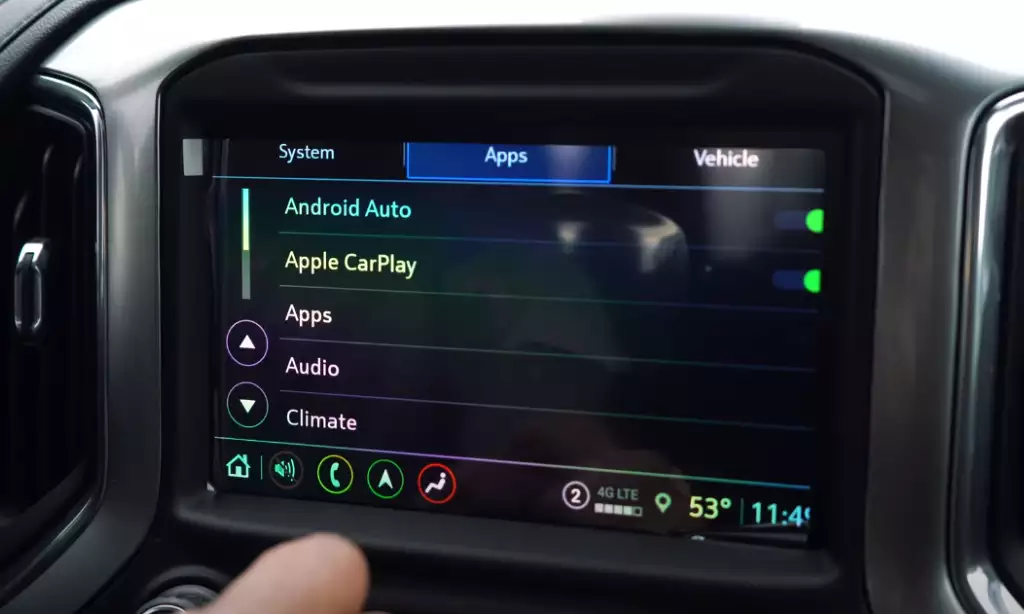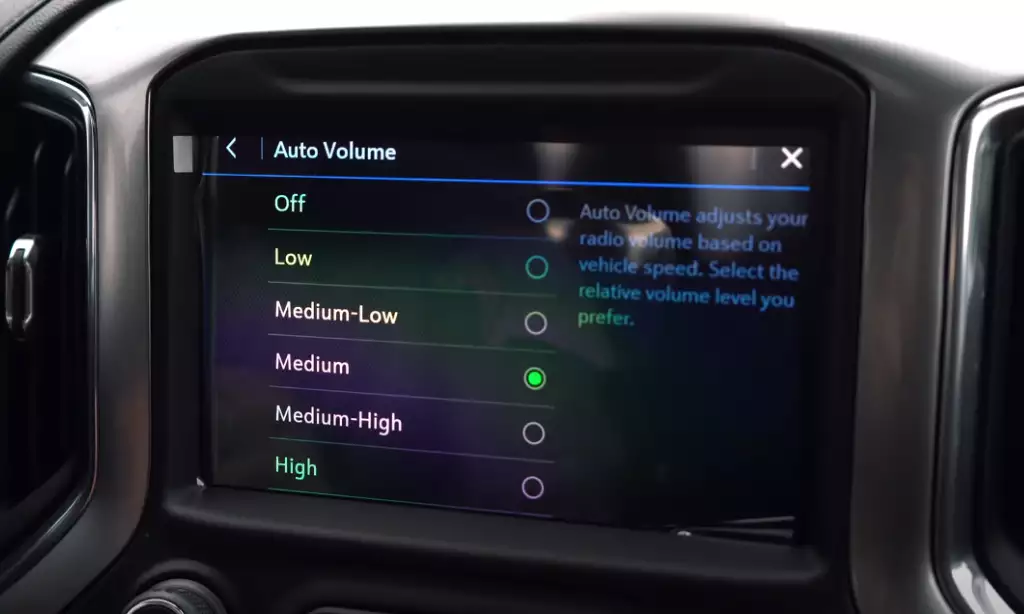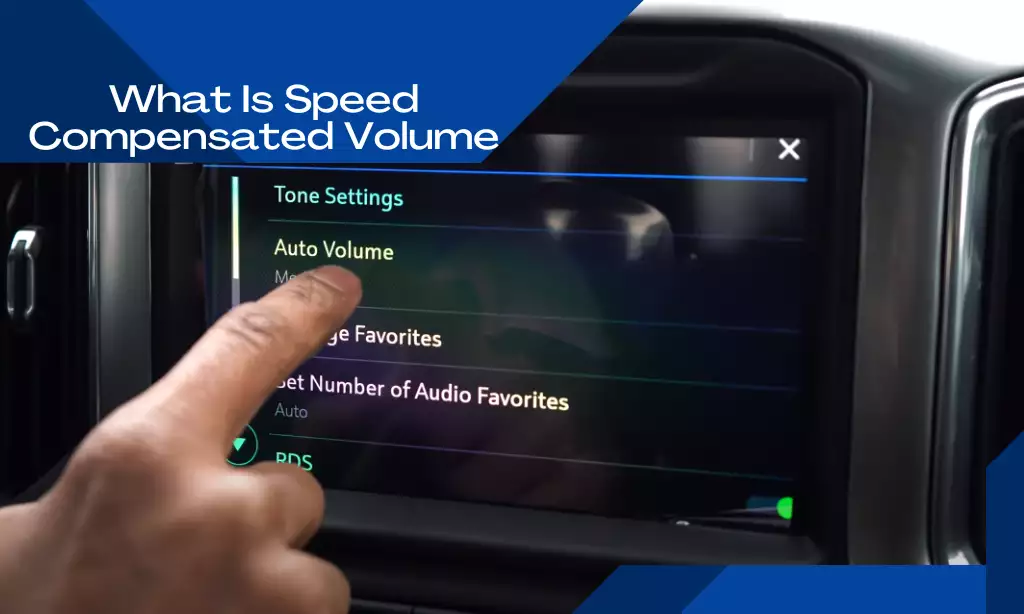What Is Speed Compensated Volume? (Everyone Should Know)
When it comes to enjoying music or podcasts while driving, one common frustration is the need to constantly adjust the volume to account for changes in road noise or vehicle speed. However, automotive technology has evolved to address this issue, and one such innovation is Speed Compensated Volume (SCV).
In this article, we will delve into the concept of Speed Compensated Volume and explore how it enhances the audio experience in your vehicle. SCV is a feature found in many modern car audio systems that automatically adjusts the volume based on the vehicle’s speed. By detecting changes in speed and road conditions, SCV ensures a consistent audio level, regardless of how fast or slow you’re driving.
In this introductory piece, we will provide a brief overview of what Speed Compensated Volume entails and why it matters. We’ll discuss the benefits of SCV, including its role in providing a consistent audio experience, enhancing safety by reducing driver distractions, and optimizing audio quality in various driving conditions.
So, if you’re tired of constantly adjusting your audio volume while driving, read on to discover how Speed Compensated Volume can revolutionize your in-car audio experience.
Short Answer:
Speed Compensated Volume (SCV) is a feature in automotive audio systems that automatically adjusts the volume based on the vehicle’s speed. It ensures a consistent audio level regardless of changes in speed, allowing for a more enjoyable and hassle-free audio experience while driving.

Speed Compensated Volume
Speed Compensated Volume (SCV) is a technology found in automotive audio systems that adjusts the volume level based on the vehicle’s speed. It aims to provide a consistent audio experience by automatically increasing or decreasing the volume as the vehicle’s speed changes.
By compensating for external factors such as wind noise or engine noise, SCV helps maintain an optimal audio level for driver and passenger comfort. This technology contributes to a safer and more enjoyable driving experience by reducing the need for manual volume adjustments, allowing the driver to focus on the road ahead. SCV is designed to ensure that the audio remains balanced and audible, regardless of the driving conditions.
Definition and Function
Speed Compensated Volume (SCV) is a feature commonly found in automotive audio systems that automatically adjusts the volume level based on the vehicle’s speed. Its primary function is to maintain a consistent audio experience for the driver and passengers by compensating for changes in external noise and vehicle speed.
How SCV Works
SCV relies on sensors integrated into the vehicle, such as the speedometer or GPS, to detect changes in speed. As the vehicle accelerates or decelerates, the SCV system adjusts the audio volume accordingly. This adjustment can be gradual or instantaneous, depending on the specific implementation.
Benefits of SCV
- Consistent Audio Experience: SCV ensures that the audio volume remains constant, compensating for variations in speed and external noise. This creates a more enjoyable listening experience without the need for frequent manual adjustments.
- Enhanced Safety: By automatically adjusting the volume, SCV reduces driver distraction, as drivers do not have to divert their attention from the road to adjust the audio system manually.
- Optimized Audio Quality: SCV helps maintain a balanced audio output, compensating for factors like wind or engine noise. This ensures that the audio quality remains optimal, regardless of driving conditions.

Benefits of Speed Compensated Volume
1. Consistent Audio Experience
One of the primary benefits of Speed Compensated Volume (SCV) is that it provides a consistent audio experience while driving. As the vehicle’s speed changes, SCV automatically adjusts the volume to compensate for variations in external noise. This ensures that the audio remains at a comfortable and balanced level, allowing you to enjoy your favorite music or podcasts without constantly adjusting the volume.
2. Enhanced Safety
SCV contributes to safer driving by reducing the need for manual volume adjustments. Instead of reaching for the volume controls while on the road, SCV automatically adapts the audio level based on the vehicle’s speed. This minimizes driver distraction, allowing you to keep your focus on the road and maintain better situational awareness.
3. Improved Driving Comfort
With SCV, you don’t have to worry about sudden changes in audio volume when accelerating or decelerating. The system seamlessly adjusts the volume, ensuring a smooth and uninterrupted audio experience. This enhances overall driving comfort and helps create a more pleasant environment inside the vehicle.
4. Optimized Audio Quality
SCV helps optimize the audio quality in different driving conditions. By compensating for factors like wind noise or engine noise, SCV ensures that the audio output remains clear and well-balanced. This allows you to enjoy your music or audio content with improved fidelity, regardless of the speed or external environment.
5. Convenience and User-Friendliness
SCV eliminates the need for constant manual adjustments of the audio volume, providing a hassle-free experience for the driver and passengers. It simplifies the audio control process, making it more convenient and user-friendly.

Limitations and Considerations of Speed Compensated Volume (SCV)
1. Audio Preference
While SCV aims to provide a consistent audio experience, some drivers may prefer to manually adjust the volume according to their personal preferences or the specific driving conditions. SCV may limit the ability to make immediate volume adjustments based on individual preferences.
2. Accuracy and Sensitivity
The effectiveness of SCV can vary depending on the accuracy and sensitivity of the sensors used to detect speed changes. In some cases, there may be slight delays or inconsistencies in volume adjustments, particularly during rapid speed changes or in challenging driving conditions.
3. Calibration and Maintenance
To ensure optimal performance, SCV may require periodic calibration and maintenance. It’s important to follow the manufacturer’s guidelines for maintenance and servicing to ensure accurate volume adjustments and reliable functionality.
4. Compatibility and Availability
SCV may not be available in all vehicles or audio systems. It is crucial to check the vehicle specifications or consult the manufacturer to determine if SCV is a feature included in your particular vehicle model or audio setup.
5. Integration with Other Features
SCV relies on the integration with other vehicle systems, such as the speedometer or GPS, for speed detection. Compatibility and proper functioning of these systems are essential for accurate volume adjustments. Any issues or malfunctions with these systems could affect the performance of SCV.
6. System Limitations
SCV primarily focuses on adjusting the volume level based on speed changes. It may not compensate for other factors that can impact audio quality, such as road surface conditions, vehicle vibrations, or variations in external noise sources. It is important to manage expectations and understand the specific capabilities of SCV in your vehicle.
Frequently Asked Questions
Q: What is Speed Compensated Volume (SCV)?
A: Speed Compensated Volume, also known as SCV, is a feature found in automotive audio systems that automatically adjusts the volume level based on the vehicle’s speed. It aims to provide a consistent audio experience by compensating for changes in external noise and maintaining an optimal volume level while driving.
Q: How does Speed Compensated Volume work?
A: SCV relies on sensors integrated into the vehicle, such as the speedometer or GPS, to detect changes in speed. Based on this information, the audio system adjusts the volume level accordingly. As the vehicle accelerates or decelerates, the system increases or decreases the audio volume to compensate for variations in external noise and ensure a consistent listening experience.
Q: What are the benefits of Speed Compensated Volume?
A: SCV offers several benefits, including a consistent audio experience, enhanced safety by reducing driver distractions, and optimized audio quality. It ensures that the audio volume remains balanced and audible, regardless of changes in vehicle speed or external noise conditions.
Q: Can I customize the Speed Compensated Volume settings?
A: The level of customization may vary depending on the specific vehicle and audio system. Some vehicles offer options to adjust the sensitivity or disable SCV altogether, allowing drivers to personalize their audio experience according to their preferences.
Q: Are there any limitations to Speed Compensated Volume?
A: While SCV provides a convenient solution for maintaining consistent audio levels, it may have limitations. Factors such as sensor accuracy, system delays, or the inability to compensate for certain types of external noise may impact the effectiveness of SCV. It’s important to understand the capabilities and limitations of SCV in your specific vehicle.
Q: Is Speed Compensated Volume available in all cars?
A: SCV availability may vary depending on the vehicle make, model, and audio system configuration. It is advisable to consult the owner’s manual or contact the vehicle manufacturer to determine if your car is equipped with SCV or if it can be added as an optional feature.
Q: Can I disable Speed Compensated Volume if I prefer manual volume control?
A: Depending on the vehicle’s audio system, there may be options to disable SCV or adjust its sensitivity. This allows drivers who prefer manual volume control to override the automatic adjustments and have full control over the audio level.
- Why Are My Car Headlights Not Bright Enough? - May 9, 2024
- How Long Can You Drive With An EVAP Leak? - May 9, 2024
- What Does B Stand for in a Car? [Full Guide] - May 9, 2024


![Smart Car Weight & Average Car Weight [Unveiling the Secrets]](https://automhelp.com/wp-content/uploads/2023/07/Smart-Car-Weight-768x461.png)


